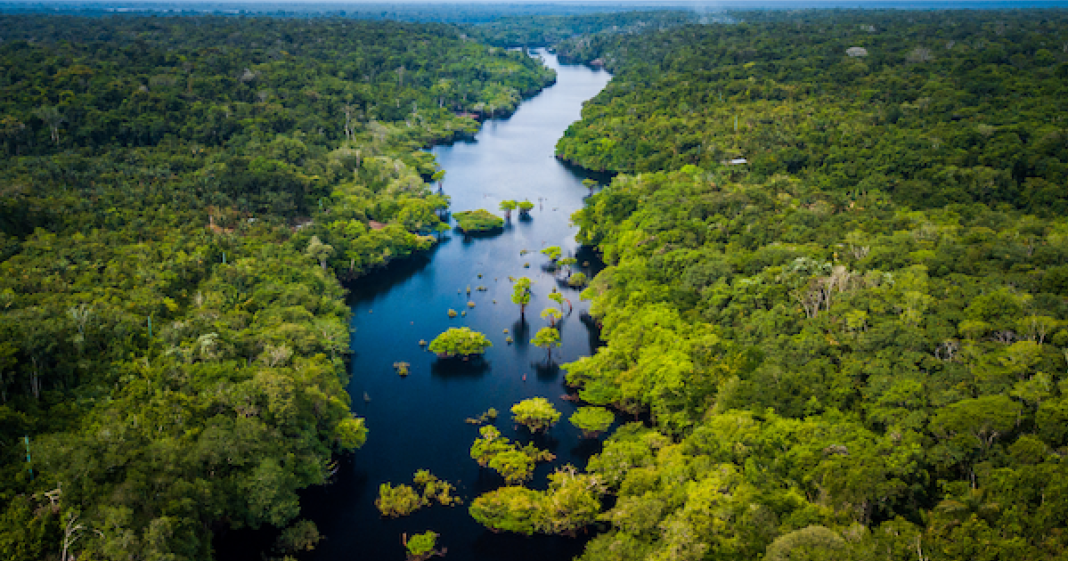This article is sponsored by ADM.
The intensifying climate crisis impacts us in many ways, including the erosion of biodiversity. The world is rightly focused on greenhouse gases and net zero targets, and as part of our work to preserve and protect our future, we need to also consider how we’re helping mitigate impacts like the rapid decline of species and ecosystems.
Biodiversity loss isn’t just an environmental concern; it’s also an economic one. In 2023, a PwC report indicated that over 55 percent of the world’s gross domestic product was moderately or highly dependent on nature; meanwhile, roughly a million animal and plant species—a quarter of assessed species—are facing potential extinction in the coming years and decades. Their disappearance would erode our ecosystems further, threatening economies and food security worldwide. The variety of life on our planet, from the smallest microorganisms to the largest mammals, helps maintain the balance of nature we vitally need: Healthy ecosystems both feed the planet and support our economies.
Given the intricate link between business and nature, it’s imperative that companies play a significant role in preserving biodiversity. At ADM, we recognize that to achieve our purpose of unlocking the power of nature to enrich the quality of life, we must use our unique value chain position to drive impact around the globe. That’s why we’re advancing a broad array of efforts to protect nature and habitats, and to help ensure the sustainability of our planet and food systems.
There’s more work to be done. But we’re making progress on a journey that more companies can embrace to ensure healthy ecosystems.
Combatting deforestation
Deforestation is a primary driver of biodiversity loss. Clearing forests destroys the habitats of countless species and releases massive amounts of carbon dioxide into the atmosphere. Curbing this practice, especially in biodiversity hotspots, is crucial.
Now that net zero targets have become the norm for companies, deforestation targets should be next. As with net zero efforts, they require a multi-pronged approach.
At ADM, we’re committed to eliminating deforestation through enhanced traceability, monitoring and engagement with suppliers, so they understand our expectations. In 2023, we unveiled a new goal for all our direct supply chains to be free of conversion of primary native vegetation in high-risk areas in South America by the end of 2025, and indirect supply chains by the end of 2027. We are also committed to ensuring 100 percent deforestation-free supply chains by 2025. For example, In South America, we’re using satellite mapping to monitor our soybean supply chain, which allows us to identify any areas of deforestation risk and address them swiftly with suppliers.
Regenerating life from the ground up
Regenerative agriculture is a cornerstone of ecological restoration. Its principles and practices rebuild biodiversity above and below the soil surface. Techniques like minimal tilling and cover crops help reduce greenhouse gas emissions, restore soil health, support pest control and provide habitat for pollinators—all while producing healthier and more efficient crops.
One key aspect is enhancing soil health by increasing soil organic matter and microbial diversity. Robust, living soils teeming with fungi, bacteria and other life forms are the foundation for carbon sequestration and a resilient food and agriculture system. Leveraging technologies like microbial seed coatings can turbocharge these benefits across large acreages.
In 2023, the farmers working with ADM helped reduce GHG emissions by 310,000 metric tons and sequestered more than 263,000 metric tons of CO2. Since launching our regenerative agriculture program in North America, we expanded last year to Brazil, the UK and Poland.
Progress begets progress. Grower meetings are a cornerstone of our regenerative agriculture programs, with farmers discussing practice adoption, educating one another and sharing best practices at our “re:generations” meetings. With their enthusiasm and partnership, we’ve announced our updated goal to reach 5 million regenerative acres globally by 2025.
Supporting local yet far-reaching habitat protection
Biodiversity loss is a global issue that necessitates local solutions. This differs from climate action, where any reduction in emissions affects the overall total. Restoring genetic diversity in one region doesn’t improve an agricultural system elsewhere—at least, not directly. But if we share what’s effective in one geography, we can replicate successful strategies and amplify our impact.
ADM is working with and supporting local organizations focused on preventing biodiversity loss and protecting natural habitats. In Brazil, for example, we partner with Parque Vida e Cerrado, a local NGO, to monitor wild animals at the local level, an important aspect of biodiversity preservation. We also are proud to support Restor, a nonprofit that runs a global platform for nature restoration. Along with 1,000 other organizations across 140 countries, we help fund technology that shares ecological data and more—in effect, planting seeds for other successful projects.
Safeguarding a world that nurtures nature
Ensuring diverse biological ecosystems will take the same determined and collective response the world has marshalled to address emissions and spur the transition to clean energy. The private sector can be a powerful force for environmental progress when harnessing its innovative capabilities, market influence and financial resources, but companies cannot drive the transformational change required alone. We need a broad coalition of committed contributors. That’s why ADM is partnering with organizations like the E.O. Wilson Biodiversity Foundation, supporting the group’s work to advance research and education and to nurture the future stewards of nature.
By giving the biodiversity crisis its due, we’ll also be confronting climate challenges, because the healthier our ecosystems are, the better they absorb CO2. And by helping restore the delicate balance of biodiversity and climate, we will foster a more resilient global food system while also sustaining and nurturing nature in the same way it nurtures us. We’ll safeguard both the rich tapestry of life on this planet and human prosperity for generations to come.
